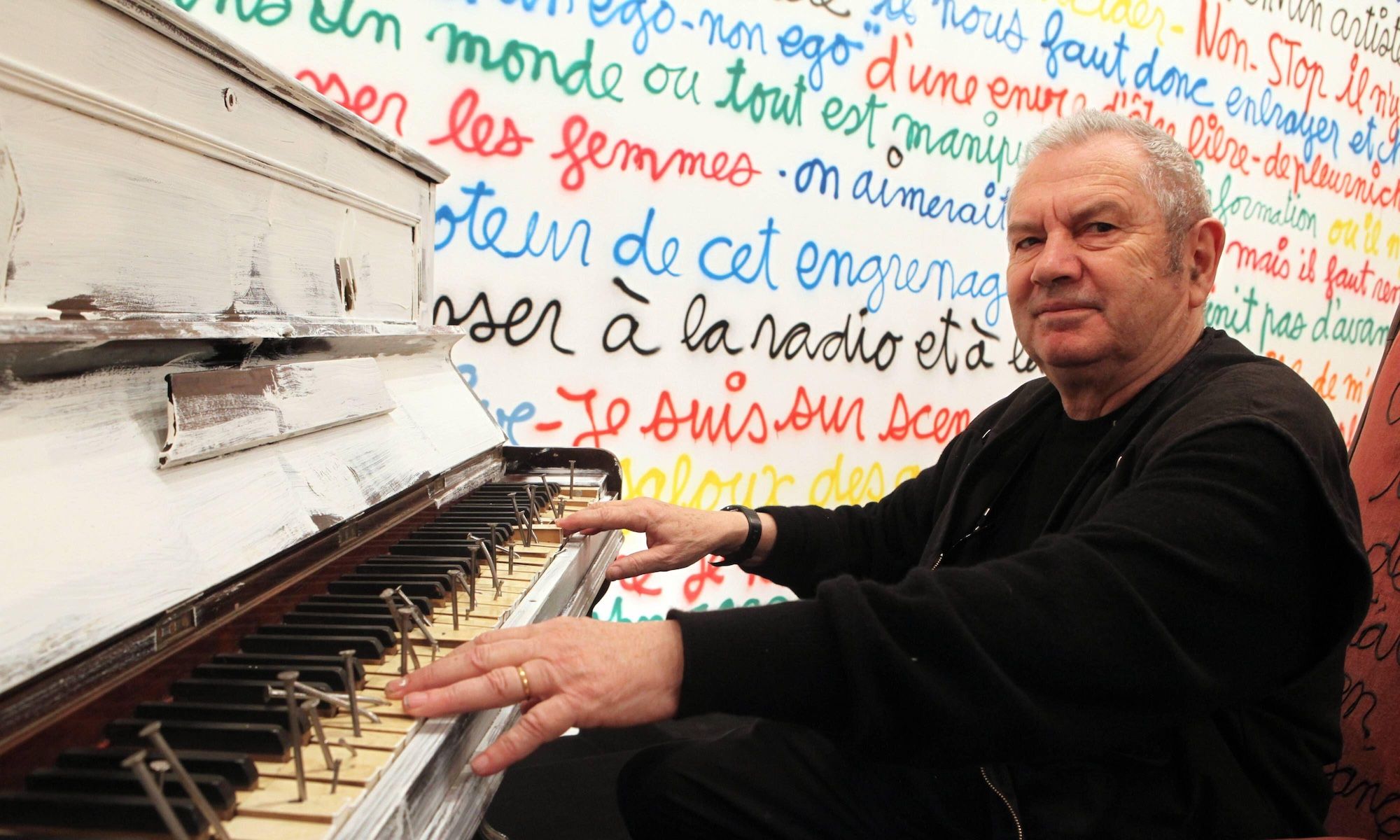Benjamin Vautier at his retrospective in Lyon, Ben fait son striptease integral, in 2010 Photo by Vincent Dargent / Abaca Press / Alamy Stock Photo
The French artist Benjamin Vautier—often referred to simply as Ben—died on 5 June at the age of 88. Ben was a core member of the international Fluxus movement, and he died by suicide in his home in Saint-Pancrace, France, less than a day after his wife Annie died of a stroke. The death was confirmed by the couple’s children Eva and François.
Though he worked across media, Ben’s most well-known body of work was comprised of paintings that featured handwritten text with messages that were at times quippy or irreverent, at times profound, and most often a synthesis of all of the above. The work’s accessibility lent to its mass appeal, and reproductions abounded in his native France, where he was widely popular. French president Emmanuel Macron even released a statement on the occasion of Ben’s death, that read in part: “On our children’s pencil cases, on so many everyday objects and even in our imaginations, Ben had left his mark, made of freedom and poetry, of apparent lightness and overwhelming depth.”
France’s cultural minister, Rachidi Dati, also paid tribute in a social media post, saying: “With the disappearance of Benjamin Vautier, the world of Culture loses a legend.” Dati added: “A goldsmith of language, Ben leaves behind nearly 12,000 artistic creations. His humorous, sometimes satirical writings have accompanied and marked generations. We will miss his free spirit terribly, but his art will continue to make France shine throughout the world.”
Ben was born in Naples in 1935. His parents divorced in his childhood, his father taking custody of Ben’s brother, who was one year older, and Ben going with his mother, who relocated them to Turkey, Egypt and Switzerland, before arriving in the French coastal city of Nice—where the artist would remain for the rest of his life—when Ben was 14.
A mediocre student, Ben left school as a teen to work in a bookstore. In a 2023 interview with Forbes, he cited his time in the bookstore as his introduction to art. “I remember my first artistic experience was opening up books and if I found something new, I used to cut it out and stick it in my room, so I used to spoil all the books, then try to sell them,” he said. “I picked only artists who shocked me because I was looking for something new, so I started by the abstract painters: Poliakoff, Soulages and Picasso. The shock Marcel Duchamp came with a meeting with Arman, and after that, I opened up to the possibility that everything was art. Then I developed a theory when I was 18 or 19: art must be new. So I came to art like that.”
From 1958 to 1973, Ben ran a record store in Nice with a small top floor that he used as a gallery space called Galerie Ben Doute de Tout (its name translates to “Ben doubts everything”). It was through the gallery that Ben met the likes of Yves Klein as well as Fluxus cofounder George Maciunas, both of whom would be very influential in shaping Ben’s practice. (At Klein’s encouragement, Ben wrote all over the walls of the shop, which may have led to the incorporation of text into his work that followed soon after.)
Like many artists of the Fluxus movement, Ben sought to break down the barriers between high- and low-brow art, as well as minimising the distinction between art and everyday life. By the late 1950s, he had already begun his Living Sculpture series, in which he would sign his name on objects, friends and even strangers, thus dubbing them works of art. Throughout the 1960s, he began his gestes or gestures—akin to the Happenings that had gained popularity in the US a few years prior—in which his own body became the primary vessel for the work.
Though he would continue to operate across many different media, including performance, installation, conceptual practices like Mail Art and photography, it was his text paintings—with the immediacy of their messaging, their lack of pretension, and their appeal to wide-ranging audiences—that would be Ben’s most celebrated body of work. Many of these works were dotted with the phrase tout est art—or everything is art—a maxim and worldview that Ben both championed in others and lived by in earnest.

